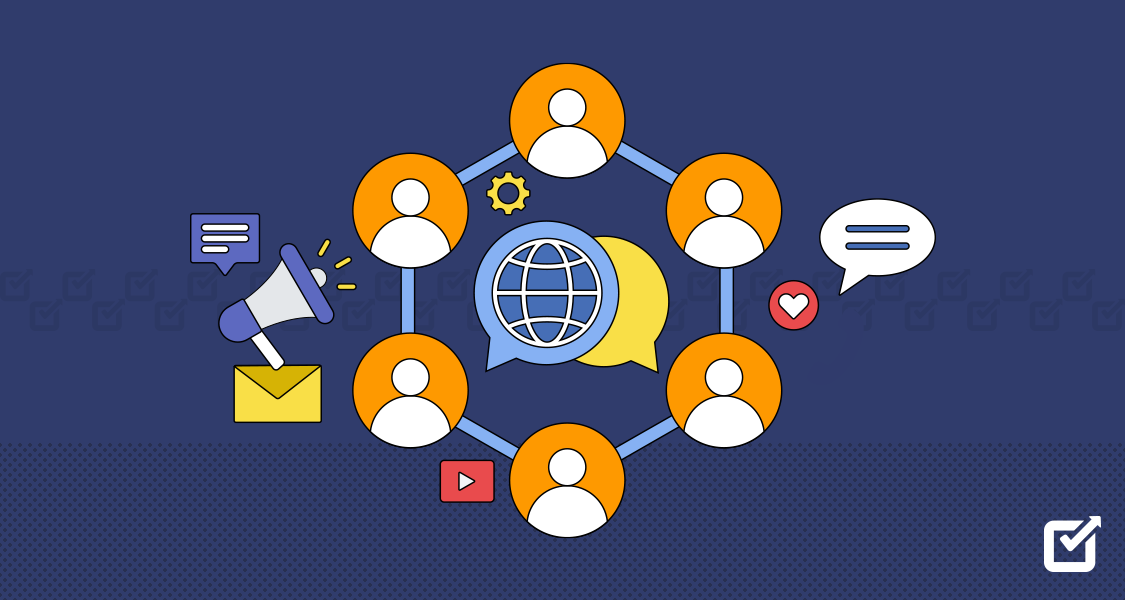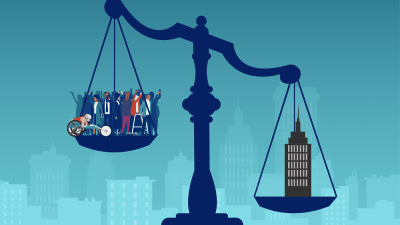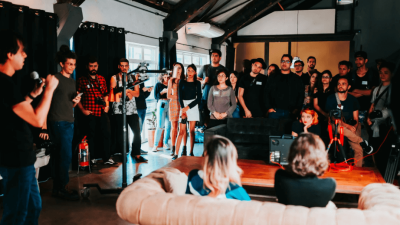Community building activities serve as the backbone of meaningful relationships within groups, organizations, and neighborhoods. These intentional interactions create bonds that transform strangers into collaborators, colleagues into friends, and neighbors into support networks.
The concept extends far beyond simple social gatherings or team-building exercises. Effective community building activities address fundamental human needs for connection, belonging, and shared purpose. They create environments where individuals feel valued, heard, and integral to something larger than themselves.
Modern society often fragments our natural community connections. Remote work, digital communication, and busy lifestyles can leave people feeling isolated despite being constantly connected. Thoughtfully designed community activities counteract this trend by creating genuine opportunities for meaningful interaction.
Understanding what makes community building activities effective helps leaders, organizers, and participants create experiences that genuinely strengthen relationships and foster long-term engagement within their communities.
The Psychology Behind Community Connection
Human beings are inherently social creatures who thrive in supportive community environments. Our psychological well-being depends significantly on feeling connected to others who share our values, interests, or circumstances.
Community building activities tap into fundamental psychological principles that drive human behavior. The need for belonging motivates people to seek out groups where they feel accepted and valued. These activities create safe spaces where individuals can express themselves authentically without fear of judgment.
Shared experiences create powerful bonding opportunities that individual interactions cannot replicate. When people work together toward common goals or navigate challenges as a group, they develop trust and mutual respect that forms the foundation of strong communities.
The psychological safety created through well-designed community activities enables vulnerability and openness. People share more of themselves when they feel secure in their environment, leading to deeper connections and stronger community bonds.
Recognition and appreciation fulfill important psychological needs that strengthen community participation. Activities that highlight individual contributions while celebrating collective achievements create positive feedback loops that encourage continued engagement.
Interactive Workshops and Learning Sessions
Educational activities that encourage participation and discussion create natural opportunities for community building while providing valuable knowledge and skills. These sessions work particularly well because they combine personal growth with social interaction.
Skill-sharing workshops allow community members to teach each other, creating reciprocal relationships that strengthen bonds. A photography enthusiast might lead a session on composition while learning cooking techniques from another member. This exchange builds respect and appreciation among participants.
Book clubs and discussion groups provide structured frameworks for meaningful conversations about shared interests. The format ensures everyone has opportunities to contribute while exploring topics that matter to community members.
Problem-solving sessions that address real community challenges engage participants in collaborative thinking while working toward tangible improvements. These activities demonstrate the power of collective action and create ownership of solutions.
Creative workshops like art projects, writing groups, or music sessions allow for self-expression while building connections through shared creative experiences. The non-competitive nature of creative activities reduces social anxiety and encourages participation.
Collaborative Projects and Initiatives
Working together on meaningful projects creates some of the strongest community bonds because participants share both the effort and the satisfaction of achievement. These activities generate lasting results that benefit the entire community.
Community gardens exemplify collaborative projects that bring people together around shared goals. Participants plan, plant, maintain, and harvest together, creating multiple touchpoints for interaction while producing tangible benefits for everyone involved.
Neighborhood improvement projects like clean-up days, mural painting, or playground construction give community members opportunities to contribute their unique skills while working toward visible improvements in their shared environment.
Fundraising initiatives for local causes unite community members around shared values while developing organizational and collaboration skills. The planning and execution phases create numerous opportunities for meaningful interaction and relationship building.
Mentorship programs pair experienced community members with newcomers or those seeking guidance. These relationships often develop into lasting friendships while strengthening the overall community support network.
Social Gatherings and Cultural Events
Celebrations and social events create relaxed environments where community members can interact outside of formal structures or work relationships. These activities often reveal different aspects of people’s personalities and interests.
Potluck dinners combine food sharing with social interaction, creating comfortable settings for conversation while celebrating diverse backgrounds and traditions within the community. The contribution aspect ensures everyone has a stake in the event’s success.
Cultural festivals and heritage celebrations allow community members to share their backgrounds while learning about others. These events build appreciation for diversity while finding common ground in shared human experiences.
Game nights and recreational activities provide low-pressure environments for interaction while creating shared experiences and memories. Both competitive and cooperative games serve different community building purposes depending on the group’s needs.
Seasonal celebrations mark the passage of time together, creating traditions that strengthen community identity and provide regular opportunities for connection throughout the year.
Service and Volunteering Opportunities
Community service activities build connections while addressing real needs in the broader community. These activities often attract people who share similar values and create bonds through meaningful shared work.
Food drives and meal preparation for those in need bring community members together around acts of service that directly help others. The collaborative nature of these activities creates natural opportunities for conversation and relationship building.
Environmental stewardship projects like tree planting, stream cleaning, or recycling drives connect community members who care about environmental issues while creating visible positive impacts in their shared spaces.
Supporting local nonprofits through volunteer work expands community connections beyond the immediate group while reinforcing shared values and commitment to making a difference.
Disaster relief and emergency response activities, while not planned, often strengthen community bonds dramatically when people support each other through difficult circumstances.
Sports and Physical Activities
Physical activities create unique community building opportunities because they involve shared challenges, mutual encouragement, and often playful competition that can strengthen relationships.
Walking groups provide regular, low-intensity opportunities for conversation while promoting health and wellness. The consistent schedule helps build routine connections among participants.
Team sports create natural collaboration opportunities while providing structured interaction frameworks. Both competitive leagues and casual pick-up games serve community building purposes.
Fitness classes and exercise groups combine personal wellness goals with social interaction. The shared experience of working toward health improvements creates mutual support and encouragement.
Outdoor adventure activities like hiking groups or cycling clubs bring together people who enjoy similar activities while exploring local areas together. These activities often attract people seeking both physical activity and social connection.
Digital Community Building
Modern community building increasingly incorporates digital elements that extend in-person interactions and create opportunities for connection between gatherings.
Online discussion forums and social media groups allow community members to maintain connections and continue conversations between in-person meetings. These platforms work best when they supplement rather than replace face-to-face interaction.
Virtual events and webinars can bring together community members who might not be able to attend in-person gatherings due to scheduling, geographic, or physical constraints.
Collaborative digital projects like community websites, newsletters, or social media campaigns give technically inclined members opportunities to contribute their skills while keeping the broader community informed and engaged.
Digital storytelling projects that capture and share community history, member spotlights, or collective achievements help build community identity while preserving important memories and milestones.
Measuring Community Building Success
Effective community building activities should produce measurable improvements in group cohesion, participation, and satisfaction. Understanding these indicators helps organizers refine their approaches and demonstrate value to stakeholders.
Participation rates in community activities often increase as bonds strengthen and people feel more connected to the group. Growing attendance at events indicates successful community building efforts.
Retention rates of community members provide insight into whether activities are creating lasting connections. People who feel truly connected to a community are more likely to remain engaged over time.
The quality and frequency of interactions between community members outside of organized activities often indicates successful relationship building. Spontaneous connections and collaborations suggest strong community bonds.
At Build Bonding, we’ve observed that the most successful community building activities combine structured interaction opportunities with flexible formats that allow relationships to develop naturally over time.
Overcoming Common Challenges
Community building activities face predictable challenges that organizers can address proactively with thoughtful planning and inclusive approaches.
Participation barriers like scheduling conflicts, transportation issues, or financial constraints can prevent community members from engaging in activities. Successful organizers address these barriers through flexible scheduling, location choices, and financial assistance when needed.
Personality differences and communication styles within communities require activities that accommodate different comfort levels and interaction preferences. Balancing group activities with smaller breakout sessions often works well.
Cultural and generational differences can create misunderstandings or exclusion if not addressed thoughtfully. Inclusive planning that considers diverse perspectives and preferences helps create welcoming environments for all community members.
Maintaining momentum over time requires variety in activities and consistent leadership commitment. Communities that rely too heavily on single activities or organizers often struggle with sustainability.
Creating Sustainable Community Programs
Long-term community building success requires systematic approaches that can continue even as leadership and membership change over time.
Leadership development within the community ensures that activities can continue as founding organizers step back or move on. Training multiple people to facilitate different types of activities creates resilience and reduces burnout.
Resource management and funding strategies help communities maintain their activities without overwhelming volunteer organizers or excluding members due to cost concerns.
Documentation of successful activities and organizational knowledge helps new leaders understand what works and why, making transitions smoother and preserving institutional knowledge.
Regular evaluation and adaptation of community building activities ensures they continue meeting member needs as the community evolves and grows over time.
Community building activities work best when they arise from genuine understanding of member needs and interests rather than imposed programming. The most successful communities invest time in listening to their members and designing activities that address real desires for connection, growth, and shared purpose.
The investment in community building activities pays dividends through stronger relationships, increased collaboration, and more resilient communities that can support their members through both celebrations and challenges.





